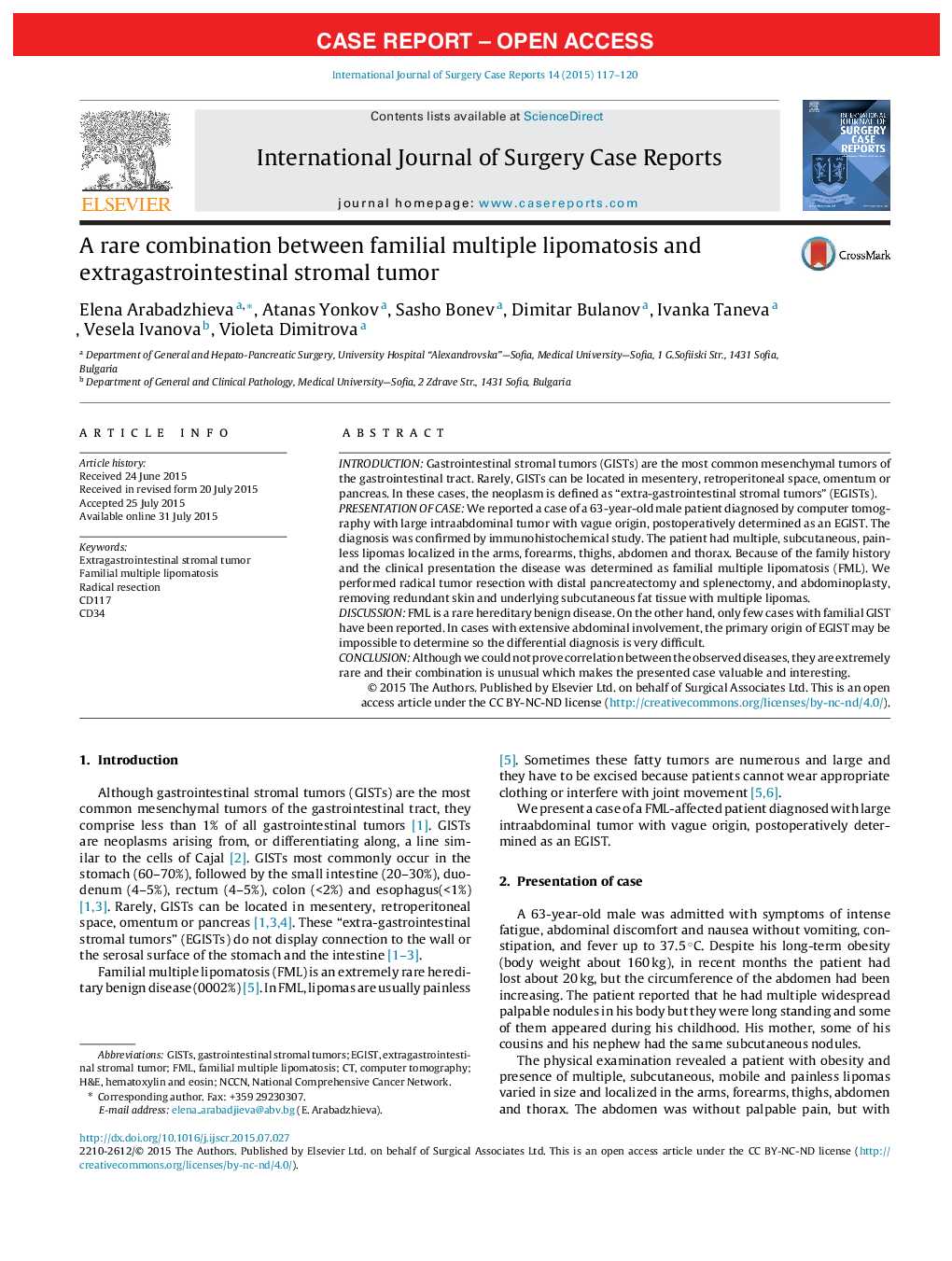| Article ID | Journal | Published Year | Pages | File Type |
|---|---|---|---|---|
| 4289043 | International Journal of Surgery Case Reports | 2015 | 4 Pages |
•Familial multiple lipomatosis (FML) is a rare hereditary benign disease.•The origin of extra-gastrointestinal stromal tumors (EGISTs) remains controversial.•EGISTs and cells of Cajal have similar features—the expression of CD117 and CD34.•Surgical resection is the standard treatment of EGISTs.•Targeted medical therapy of EGISTs by tyrosine kinase inhibitors can be useful.
IntroductionGastrointestinal stromal tumors (GISTs) are the most common mesenchymal tumors of the gastrointestinal tract. Rarely, GISTs can be located in mesentery, retroperitoneal space, omentum or pancreas. In these cases, the neoplasm is defined as “extra-gastrointestinal stromal tumors” (EGISTs).Presentation of caseWe reported a case of a 63-year-old male patient diagnosed by computer tomography with large intraabdominal tumor with vague origin, postoperatively determined as an EGIST. The diagnosis was confirmed by immunohistochemical study. The patient had multiple, subcutaneous, painless lipomas localized in the arms, forearms, thighs, abdomen and thorax. Because of the family history and the clinical presentation the disease was determined as familial multiple lipomatosis (FML). We performed radical tumor resection with distal pancreatectomy and splenectomy, and abdominoplasty, removing redundant skin and underlying subcutaneous fat tissue with multiple lipomas.DiscussionFML is a rare hereditary benign disease. On the other hand, only few cases with familial GIST have been reported. In cases with extensive abdominal involvement, the primary origin of EGIST may be impossible to determine so the differential diagnosis is very difficult.ConclusionAlthough we could not prove correlation between the observed diseases, they are extremely rare and their combination is unusual which makes the presented case valuable and interesting.
